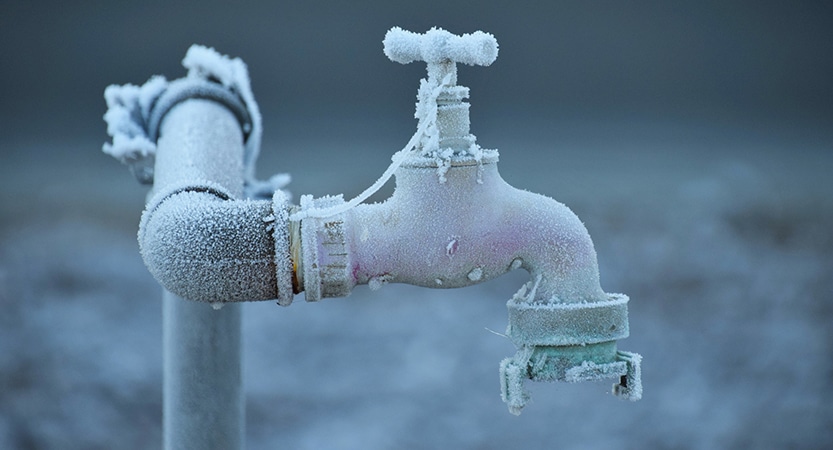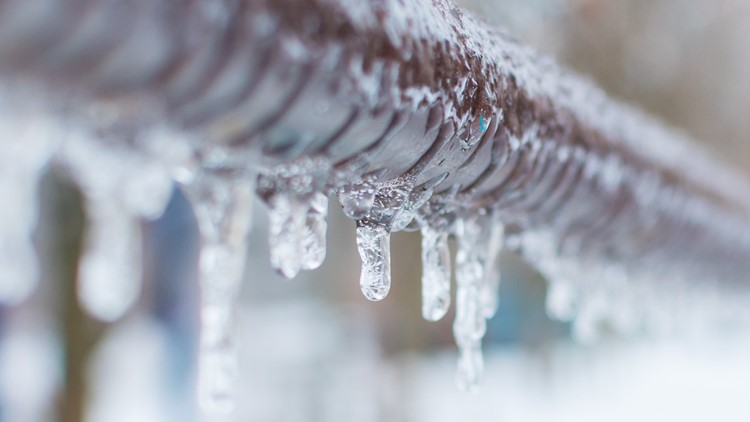This post in the next paragraphs about Prevent Frozen Pipes is without a doubt enjoyable. You should take a peek.

Winter can ruin your pipes, especially by freezing pipes. Right here's how to prevent it from occurring and what to do if it does.
Introduction
As temperatures decline, the threat of frozen pipes boosts, possibly bring about pricey repairs and water damages. Comprehending just how to avoid frozen pipelines is vital for property owners in cool climates.
Prevention Tips
Protecting susceptible pipelines
Cover pipelines in insulation sleeves or use heat tape to secure them from freezing temperatures. Focus on pipelines in unheated or exterior areas of the home.
Heating strategies
Keep indoor areas adequately heated up, especially areas with plumbing. Open closet doors to permit cozy air to circulate around pipes under sinks.
Just how to identify icy pipelines
Try to find decreased water circulation from faucets, uncommon smells or noises from pipes, and visible frost on exposed pipes.
Long-Term Solutions
Architectural changes
Think about rerouting pipes away from exterior wall surfaces or unheated areas. Include added insulation to attics, cellars, and crawl spaces.
Updating insulation
Purchase premium insulation for pipes, attics, and walls. Appropriate insulation assists maintain regular temperatures and reduces the threat of frozen pipelines.
Safeguarding Outdoor Plumbing
Yard tubes and outdoor faucets
Disconnect and drain garden hose pipes prior to winter months. Install frost-proof faucets or cover outside faucets with protected caps.
Comprehending Icy Pipes
What triggers pipes to ice up?
Pipelines ice up when subjected to temperature levels listed below 32 ° F (0 ° C) for prolonged durations. As water inside the pipes ices up, it broadens, taxing the pipeline wall surfaces and possibly causing them to rupture.
Risks and damages
Frozen pipes can lead to water interruptions, residential or commercial property damage, and expensive repair work. Burst pipelines can flood homes and cause considerable structural damage.
Indications of Frozen Water Lines
Identifying icy pipes early can avoid them from bursting.
What to Do If Your Pipelines Freeze
Immediate actions to take
If you think icy pipelines, keep taps available to soothe stress as the ice melts. Utilize a hairdryer or towels soaked in warm water to thaw pipes slowly.
Final thought
Stopping icy pipes needs aggressive measures and fast reactions. By comprehending the reasons, indications, and preventive measures, homeowners can secure their pipes during winter.
6 Proven Ways to Prevent Frozen Pipes and Protect Your Home
Disconnect and Drain Garden Hoses
Before winter arrives, start by disconnecting your garden hoses and draining any remaining water. Close the shut-off valves that supply outdoor hose bibs and leave the outdoor faucet open to allow any residual water to drain. For extra protection, consider using faucet covers throughout the colder months. It’s also important to drain water from any sprinkler supply lines following the manufacturer’s directions.
Insulate Exposed Pipes
Insulating your pipes is an effective way to prevent freezing. Pipe insulation is readily available at home improvement stores and is relatively inexpensive. Pay close attention to pipes in unheated areas such as the attic, basement, crawl spaces, or garage. Apply foam insulation generously to create a buffer against the cold. You can also wrap your pipes in heat tape or thermostat-controlled heat cables for added warmth.
Seal Air Leaks
Inspect your home for any cracks or openings that could let in cold air. Seal any holes around the piping in interior or exterior walls, as well as the sill plates where your home rests on its foundation. Additionally, make sure to keep your garage door closed unless you’re entering or exiting. Leaving it open creates a significant air leak that can lead to frozen pipes.
Allow Warm Air Circulation
During cold snaps, it’s essential to allow warm air to circulate evenly throughout your home. Leave interior doors ajar to promote better airflow. Open kitchen and bathroom cabinets to help distribute heat consistently around the rooms. If you have small children or pets, be sure to remove any household chemicals or potentially harmful cleaners from open cabinets for safety.
Let Faucets Drip
A small trickle of water can make a big difference in preventing ice formation inside your pipes. When temperatures drop significantly, start a drip of water from all faucets served by exposed pipes. This continuous flow helps prevent the water from freezing. Additionally, running a few faucets slightly can relieve pressure inside the pipes, reducing the chances of a rupture if the water inside does freeze.
https://choateshvac.com/6-proven-ways-to-prevent-frozen-pipes-and-protect-your-home/

We are very occupied with Winter Plumbing Precautions: Preventing Frozen Pipes and I am hoping you enjoyed the new page. Remember to pause to share this blog if you liked it. Thanks a lot for going through it.
Article
 Katie Holmes Then & Now!
Katie Holmes Then & Now! James Van Der Beek Then & Now!
James Van Der Beek Then & Now! Loni Anderson Then & Now!
Loni Anderson Then & Now! Lacey Chabert Then & Now!
Lacey Chabert Then & Now! Mike Smith Then & Now!
Mike Smith Then & Now!